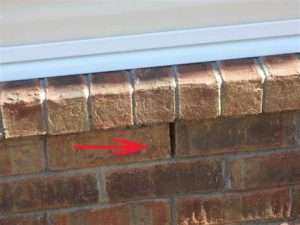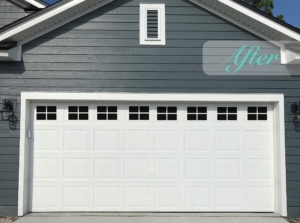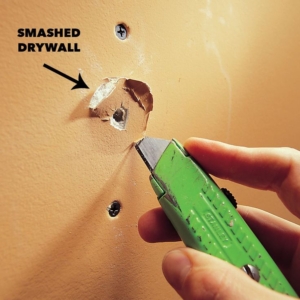Is Attic Radiant Barrier Worth It? Understanding
the Benefits, Types, and Considerations Investing
Is Attic Radiant Barrier Worth It? Understanding the Benefits, Types, and Considerations Investing in your home’s energy efficiency is a savvy move. One area often overlooked is the attic, a hotbed for energy loss. A solution that’s gaining popularity is the attic radiant barrier.
Are they worth the investment? The simple answer is yes. Attic radiant barriers can significantly reduce energy costs, especially in hotter climates. However, its value also depends on several other factors. This post will delve into these considerations, helping you make an informed decision.
What is an Attic Radiant Barrier?
Definition and Purpose
An attic radiant barrier is a type of insulation that is installed in the attic of a building to reduce the transfer of heat. Its primary purpose is to reflect radiant heat away from the living space, keeping the attic cooler and reducing the load on the HVAC system.
How Does it Work?
Attic radiant barriers work by reflecting radiant heat. Unlike traditional insulation, which primarily slows down heat transfer through conduction and convection, a radiant barrier prevents the majority of radiant heat from entering the attic in the first place.
Radiant heat is the form of heat that travels in waves and can move through empty space. It is emitted by hot surfaces such as the sun, the roof, or even the walls of a building. When radiant heat reaches the attic, it can pass through traditional insulation materials and warm up the living space below.
A radiant barrier consists of a material that is highly reflective, typically made of aluminum. It is installed on the underside of the roof rafters or on the attic floor, facing the roof. When radiant heat strikes the barrier, it is reflected back towards the roof, preventing it from entering the attic and warming up the living space.
By reducing the amount of heat that enters the attic, a radiant barrier can help to create a more comfortable living environment and reduce the strain on the HVAC system. This can lead to energy savings and lower utility bills, particularly in hot climates where cooling costs are high.
In addition to its cooling benefits, a radiant barrier can help prevent moisture buildup in the attic. By reflecting radiant heat away, it reduces the chances of condensation forming on the underside of the roof, which can contribute to mold and mildew growth.
Benefits of Attic Radiant Barrier
Energy Efficiency
One of the primary benefits of an attic radiant barrier is its ability to enhance energy efficiency. These barriers work by reflecting the sun’s radiant heat away from the attic, preventing it from penetrating into the living spaces below. By reducing the amount of heat that enters your home, your cooling system can operate more efficiently, thereby decreasing energy consumption and lowering your utility bills.
Improved Comfort
Attic radiant barriers also play a significant role in improving the comfort of your home. By reducing the amount of heat that enters the attic, they help to maintain cooler temperatures in your living spaces, even during hot summer months. This means that your air conditioning system doesn’t have to work as hard to keep your home comfortable, resulting in a more pleasant indoor environment for you and your family.
Cost Savings
Installing an attic radiant barrier can lead to substantial cost savings over time. By reducing the workload on your cooling system, these barriers help to lower your energy consumption, resulting in decreased utility bills. Additionally, because your cooling system doesn’t have to work as hard, it may also experience less wear and tear, potentially extending its lifespan and reducing maintenance and repair costs.
Furthermore, attic radiant barriers can help minimize heat loss during the winter months, acting as an additional layer of insulation. This can further contribute to energy efficiency and cost savings by reducing the need for excessive heating.
Types of Attic Radiant Barriers
When it comes to improving energy efficiency in your home, one of the areas you should pay attention to is your attic. Attic radiant barriers are a popular solution for reducing heat transfer and keeping your home cooler in the summer and warmer in the winter. In this section, we will explore the different types of attic radiant barriers available in the market today.
Foil Radiant Barriers
Foil radiant barriers are one of the most common types of attic radiant barriers. They consist of a layer of reflective material, usually aluminum foil, which is installed in the attic to block radiant heat transfer. The reflective surface of the foil barrier reflects the heat back towards its source, preventing it from entering your living space.
These barriers usually come in rolls or sheets that can be easily installed by stapling or attaching them to the attic rafters or the underside of the roof. Foil radiant barriers are highly effective in reducing radiant heat gain and can result in significant energy savings.
Paint or Coating Radiant Barriers
Paint or coating radiant barriers are another option for improving the energy efficiency of your attic. These barriers are typically applied as a liquid spray or paint onto the attic surfaces, such as the underside of the roof or the attic floor. Once dry, they form a reflective coating that helps to block the transfer of radiant heat.
These radiant barriers work by reflecting the heat away from the attic surfaces, reducing heat absorption and keeping the attic cooler. Paint or coating radiant barriers are easy to apply and can be a cost-effective option for improving attic insulation.
Reflective Insulation
Reflective insulation combines the benefits of traditional insulation materials, such as fiberglass or foam, with a reflective surface to block radiant heat transfer. These insulation materials are typically faced with a layer of reflective foil or film, which enhances their thermal performance by reflecting the radiant heat back towards its source.
Reflective insulation can be installed in various forms, such as rolls, batts, or rigid panels, making it suitable for different attic configurations. It not only helps to reduce heat gain in the summer but also prevents heat loss in the winter, making it a versatile option for year-round energy savings.
Installation of Attic Radiant Barrier
Attic radiant barriers are a fantastic addition to any home, as they help keep your living spaces cooler in the summer and warmer in the winter. In this section, we will discuss the two main methods of installation: DIY installation and professional installation. Read on to find out which option is best for you.
DIY Installation
Installing an attic radiant barrier yourself can be a rewarding and cost-effective project. Before you begin, make sure you have the necessary tools and materials, including a staple gun, utility knife, measuring tape, and of course, the radiant barrier itself.
Step 1: Measure and Cut
Start by carefully measuring the dimensions of your attic. Ensure that you have enough radiant barrier material to cover the entire area. Once measured, use a utility knife to cut the radiant barrier into appropriate-sized sections.
Step 2: Secure the Barrier
Using a staple gun, carefully secure the radiant barrier to the underside of your roof rafters. Be sure to pull the material taut and staple it securely in place. Take care to avoid puncturing the barrier with the staples.
Step 3: Seal the Edges
To maximize the effectiveness of the radiant barrier, it is crucial to seal any gaps or seams. Use a high-quality foil tape to seal the edges of the barrier and ensure a tight fit. This will prevent any heat or cold air from bypassing the barrier.
Professional Installation
While DIY installation may be a viable option for some homeowners, others may prefer to enlist the help of professionals. Hiring an experienced contractor can save you time and guarantee a high-quality installation. Here’s what you can expect from a professional attic radiant barrier installation:
Assessment and Consultation
A professional installer will first assess your attic and discuss your specific needs and preferences. They will provide personalized recommendations and help you choose the right type and thickness of radiant barrier for your home.
Expert Installation
Once the consultation is complete, the installation process begins. The professional installer will have the necessary tools and expertise to ensure a precise and efficient installation. They will take care of all the measuring, cutting, and securing of the radiant barrier, leaving you with a worry-free experience.
Quality Assurance
One of the significant advantages of professional installation is the assurance of quality workmanship. Professional installers have the knowledge and experience to handle any challenges that may arise during the installation process. They will ensure the radiant barrier is correctly installed and performs optimally.
Whether you choose to install an attic radiant barrier yourself or hire professionals, the benefits of having one in your home are undeniable. DIY installation can be a rewarding project for those with the necessary skills and tools, while professional installation guarantees a hassle-free experience and optimal performance. Consider your budget, time availability, and skill level to determine the best option for your attic radiant barrier installation.
Considerations Before Installing Attic Radiant Barrier
Installing an attic radiant barrier can be a wise investment for homeowners seeking to improve energy efficiency and reduce their cooling costs. However, before diving into this project, there are several important considerations to keep in mind. By evaluating factors such as climate and location, roof and attic configuration, and existing insulation, you can make an informed decision about whether a radiant barrier is suitable for your home.
Climate and Location
The first consideration when contemplating the installation of an attic radiant barrier is your climate and location. Different regions experience varying levels of heat and humidity, which can impact the effectiveness of a radiant barrier. In hot and sunny climates, such as the southern United States, radiant barriers are particularly beneficial as they reflect the sun’s radiant heat away from the attic, preventing it from seeping into the living spaces below. However, in cooler climates where heating is the primary concern, the benefits of a radiant barrier may be less pronounced.
Roof and Attic Configuration
The second factor to consider is the configuration of your roof and attic. The effectiveness of a radiant barrier depends on the presence of an air gap between the barrier and the roof. This air gap allows for proper reflection and heat dissipation. Therefore, it is important to assess whether your attic has the necessary space for this installation. Additionally, the presence of obstructions, such as HVAC ducts or wiring, may limit the ability to install a radiant barrier effectively. Consulting with a professional contractor or energy auditor can help determine the feasibility of installing a radiant barrier in your specific roof and attic configuration.
Existing Insulation
Lastly, assess the condition and adequacy of your existing insulation before considering the installation of a radiant barrier. A radiant barrier is not a substitute for proper insulation but rather a complement to it. In fact, insulation is essential for preventing heat transfer through conduction and convection, while a radiant barrier primarily addresses radiant heat. If your home lacks adequate insulation, it is recommended to prioritize improving insulation levels before installing a radiant barrier. This ensures maximum energy efficiency and overall thermal comfort.
Before installing an attic radiant barrier, consider your climate and location, evaluate your roof and attic configuration, and assess the condition of your existing insulation. By considering these factors, you can make an informed decision about whether a radiant barrier is worth investing in for your home. Remember, consulting with professionals in the field can provide valuable insights and guidance tailored to your specific circumstances. Stay tuned for our upcoming sections that will further explore the benefits and installation process of attic radiant barriers.
Potential Drawbacks of Attic Radiant Barrier
Attic radiant barriers have gained popularity as a cost-effective solution for improving energy efficiency in homes. While these barriers offer various benefits, it’s important to consider their potential drawbacks before making a decision. In this section, we will explore three key areas where attic radiant barriers may fall short: cost, installation challenges, and limited effectiveness in cooler climates.
Cost
One of the primary concerns homeowners often have when considering attic radiant barriers is the cost involved. While the initial investment may seem daunting, it’s essential to assess the long-term benefits and potential energy savings that these barriers can provide. However, it is crucial to note that the actual cost will vary depending on the size of your attic and the specific type of radiant barrier you choose.
Installation Challenges
Installing an attic radiant barrier is not a task that can be easily accomplished by just anyone. It requires a certain level of expertise and knowledge to ensure proper installation. While some homeowners may opt for a do-it-yourself approach, it’s recommended to hire a professional to achieve the best results. Additionally, the installation process can be time-consuming and physically demanding, especially if your attic has limited accessibility.
Limited Effectiveness in Cooler Climates
While attic radiant barriers are known to be effective in reducing heat gain during hot summer months, they may not provide the same level of effectiveness in cooler climates. In areas where the climate is predominantly cool or cold, the benefits of attic radiant barriers may be limited. This is because the primary function of these barriers is to reflect radiant heat, which is more prevalent in warmer environments.
It’s important to consider your specific climate and weather patterns before investing in an attic radiant barrier. If you live in an area with primarily cooler temperatures, the effectiveness of the barrier may be diminished, and the cost of installation may not outweigh the potential benefits.
In conclusion, investing in an attic radiant barrier can be a wise decision for homeowners looking to improve energy efficiency and reduce cooling costs. By effectively blocking the transfer of radiant heat, these barriers can keep your attic and home cooler during hot summer months. This, in turn, can lessen the workload on your air conditioning system, leading to potential energy savings and increased comfort. While the upfront cost of installing a radiant barrier may seem daunting, the long-term benefits make it a worthwhile investment. Not only can it help you save on energy bills, but it can also contribute to a more sustainable and eco-friendly home. So, if you’re looking to optimize your attic’s insulation and overall energy efficiency, consider adding a radiant barrier to your home improvement plans.









